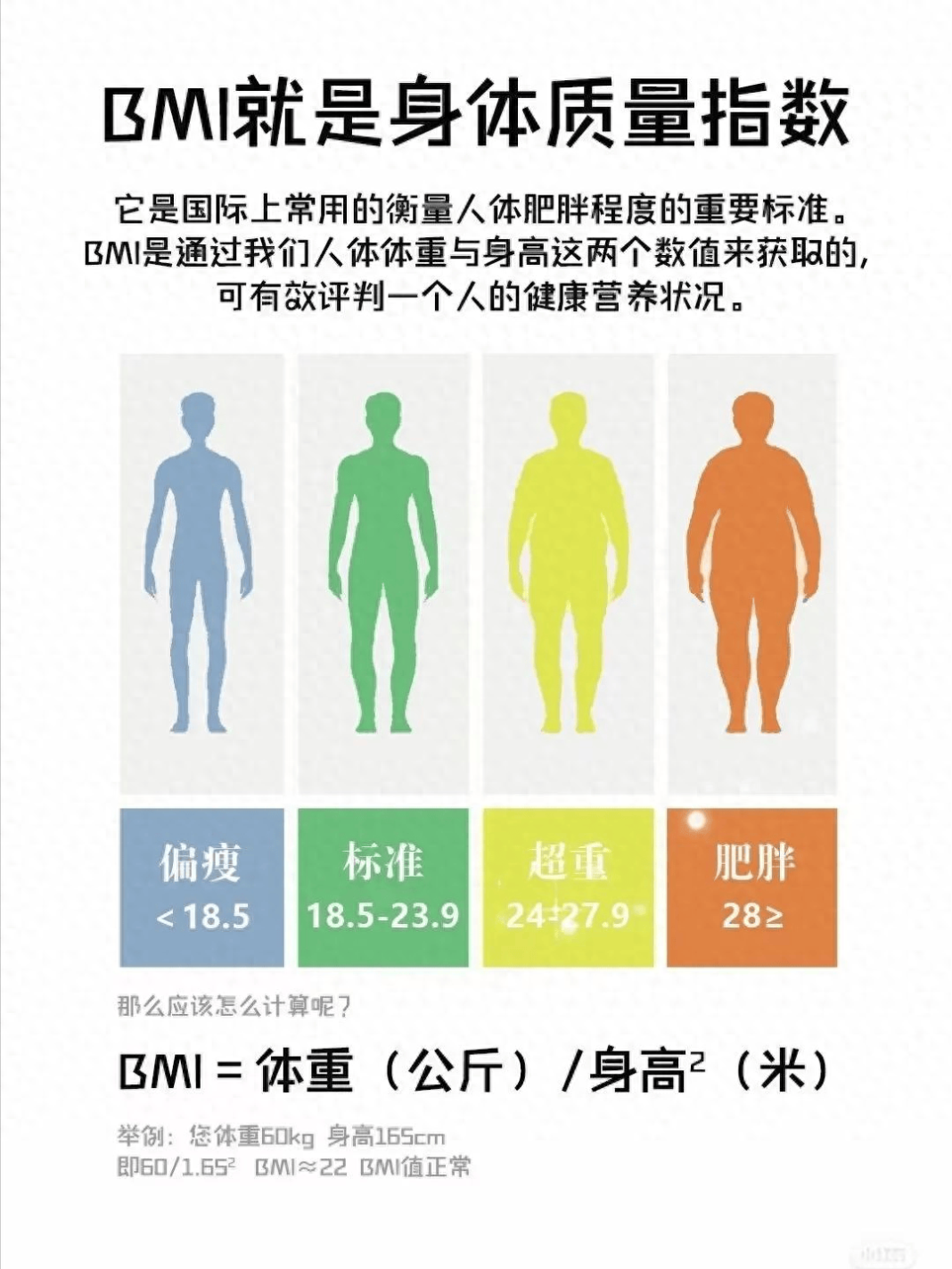In today’s society, people’s attention to health is increasing day by day, especially for men, having a healthy physique is crucial.
Health is not just the absence of diseases but a comprehensive state of well-being. Some men find that after the age of 40, their overall physical condition is not as good as before. This is not just a sign of aging but could also indicate health issues. So, does your body meet the health standards?
6 Major Golden Standards for Healthy Men: Are you meeting the criteria?
1
BMI within the standard range
BMI (Body Mass Index) = weight (kg) / height (m)^2. If your BMI is between 18.5-23.9, it falls within the standard weight range. If your BMI is over 24, it means you are overweight; if it’s over 28, it means you are obese and need to consider weight loss.
Being overweight not only affects your appearance but also increases the risk of chronic illnesses and decreases your overall health. People aiming to lose weight should reduce intake of high-fat, high-sugar foods and consume more lightly processed, natural vegetables, and fruits to lower calorie intake. Additionally, regular exercise, such as aerobics like jogging, skipping, swimming, or playing sports at least 4 times a week, can boost metabolism, reduce fat accumulation, and enhance physical well-being.
2
Complete over 30 push-ups in 1 minute
Push-ups test your upper body strength (including chest, deltoids, triceps, etc.). If you can complete over 30 push-ups in a minute, it indicates good upper body strength, allowing you to handle physical activities effortlessly, meeting the health criteria.
If your push-up count is below the standard, you can continue doing push-ups regularly, aiming for 100-200 accumulative push-ups every other day. With perseverance, you will see progress in the number of push-ups you can do.
3
Complete 20 squats in 30 seconds
Squats assess leg strength, targeting the muscles in the buttocks and thighs. Leg strength is fundamental and provides the power for movement and walking.
Aging begins with muscle loss in the legs. If you can’t complete 20 squats with body weight in 30 seconds, it indicates muscle loss in the lower body and the need for strength training.
Squat training stimulates testosterone production and slows down the aging process. It’s recommended to do 20 squats in 5 sets, every 2-3 days, for a period to strengthen your lower body.
4
Maintain a 1-minute plank
The plank tests core strength. Strengthening your core muscles can protect your spine, reducing the risk of injuries in daily life and physical activities.
If you start trembling before reaching a minute and can’t maintain a straight body line, it signifies inadequate core strength, indicating a need for core muscle training.
5
Measure blood pressure between 90-140 mm Hg
One’s blood pressure level reflects blood health. As people reach their 40s and 50s, weight gain and increased blood pressure might become uncontrollable.
If your blood pressure falls between 90-140 mm Hg, it indicates standard blood pressure and good health.
6
Not waking up more than once at night
Waking up once at night to urinate is generally acceptable, while sleeping through the night indicates good sleep quality, better mental state, and overall well-being.
Drinking too much water before bed can lead to waking up 1-2 times at night, which is also normal. It’s advised to drink more water during the day but reduce intake 2 hours before bedtime to avoid frequent trips to the restroom, which can affect sleep quality.
People with kidney issues may also wake up at night due to less water intake, which could signal potential bladder and urethral problems.
#HeadlineCreationChallenge#


